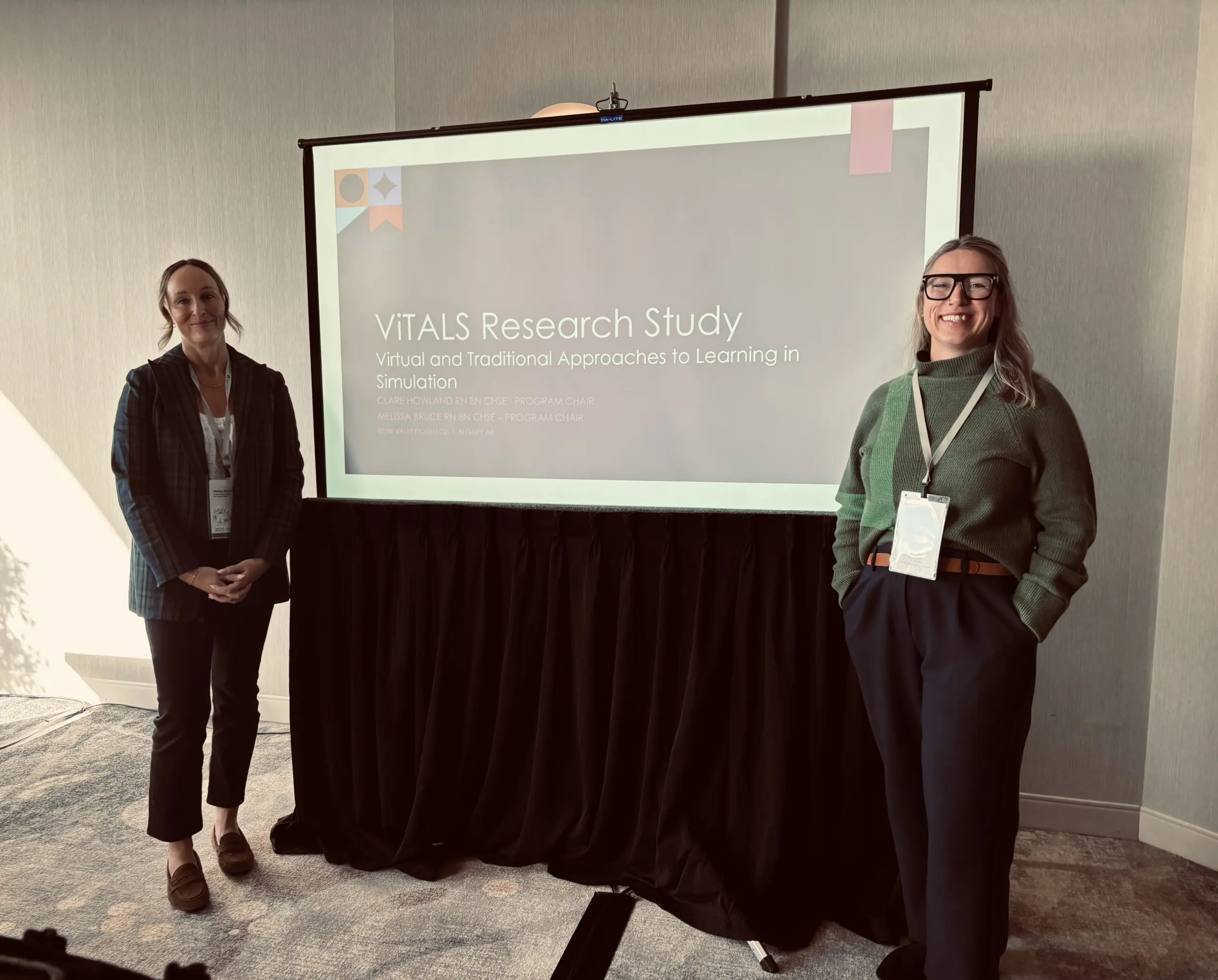Bow Valley College is in the process of launching a new arms-length business that promises to simplify the tracking and verification of health care worker qualifications and regulatory requirements, in part through the application of AI technology. Some of those positions hold as many as 50 certifications, each needs to be tracked and renewed and checked against current regulatory requirements.
Compliance Health Technology Inc. has also announced Matthew Protti as its CEO. He brings two decades of experience at the intersection of technology and highly regulated fields.
Protti takes the helm as applications of transformational AI technology begins to take off, but also at a time when there is increasing public awareness around issues of trade and interprovincial labour mobility.
He sat down for an extended interview recently to outline what Compliance Health will do and why it promises to improve regulatory compliance and improve care while lowering operation costs.
The interview has been edited for length and clarity.
BVC: Matthew, congratulations on your appointment. What does Compliance Health do?
Matthew Protti: Compliance Health is an Alberta-based technology company, one-hundred per cent owned by Bow Valley College and it's going to be leveraging artificial intelligence and machine learning to deliver a higher level of regulatory compliance to the healthcare industry in Alberta.
Compliance Health was founded in late March of 2025. Over the last quarter, we've been working on just the regulatory and administrative setup of that. We're looking at a pilot going out later this year. So, you know, we're looking at commercial operations starting next year in 2026, which will also generate revenue for Bow Valley College, as encouraged by the province.
BVC: What are some of the issues Compliance Health is trying to address?
Matthew Protti: If we take a long-term care facility as an example, there's going to be, say 60 to 100 staff who are working in that facility. Each one of those people might be required to hold up to 50 different regulatory designations. And that could be from anything from making sure that bathing water is a safe temperature, all the way up to advanced dementia care. Up until now, there was no central system for any of that information to be organized. What we're doing is using AI to make that process of discoverability of accreditations easier and more efficient.
BVC: How are accreditations currently being managed in care facilities?
Matthew Protti: Currently, the way it works is government will go around and visit every facility in Alberta once a year to ensure compliance.
But that is a spot check at one point in time where they're then looking backwards and saying, ‘All right, so over the past 12 months, let's see all of your compliance documentation. Oh, you weren't in compliance.’
It's manual effectively. From pen and paper and a binder, or a siloed Excel spreadsheet that lives on somebody's computer.
BVC: How is AI being applied to the problem?
Matthews Protti: What we're talking about here is multiple different AI systems. Some of them being we're just taking a database and comparing one number to another. So if somebody's got an accreditation that expires in a year, has that person's accreditation expired? That's not a complicated use of AI, but it currently isn't being done.
More complex uses – such as natural language processing – is training the AI on actual government regulations. Not just in Alberta but other provincial governments and the Feds as well. It can then read past and adapt to regulation changes on the fly, which will allow those healthcare providers to give care to individuals in a more timely fashion.
BVC: There's a number of things here that seem to be falling together nicely in terms of timing. Sophistication and application of AI tools have exploded. Trade and labor mobility are getting a lot of attention across the country. How does Compliance Health fit this moment?
Matthew Protti: It wouldn't have been feasible 18months ago, but now, it is. And so what we're kind of trying to bring to the table here for the industry, for government, is this is a this is an opportunity that’s time has come.
We’re at a stage where we're actually launching into this environment where AI tools have exploded and Canadians are more engaged on issues of interprovincial trade.
It’s exciting because of developments such as the agreement (June2nd 2025) between Premier Smith (Alberta) and Premier Ford (Ontario)to make it easier for people who have a certain job in a certain jurisdiction to move back and forth and have their accreditations approved.
Compliance Health could effectively handle that process because right now you have your Ontario compliance certificates and you have your Alberta ones. We’ll use AI to actually go through the regulations themselves, look at those different compliance pieces and try to overlay that to effectively come up with almost like a road map. If you want to work in these areas, in these provinces, these are the different requirements that you need to hit.
And then once you've hit them you're free to move back and forth. Our initial findings show regulations are actually quite similar.
BVC: Who is the prospective client in all of this?
Matthew Protti: There’s three major areas of interest in this – operators, staff and government.
Of the operators, government runs about a third of all the long-term care facilities in Alberta – much higher if you include hospitals. Roughly another third is owned by larger private corporations that may have long term care facilities in more than one province. And about a third is owned by nonprofits or faith or community-based organizations.
For staff who are working in the facilities, this means no more training in one facility, and then redoing the training when you take another job. Less redundant training will increase the amount of patient care.
And then the last piece is going to benefit government on the regulatory side by making it easier to ensure regulatory compliance on a proactive, rather than a reactive, basis.
BVC: How does this fit with the existing strengths of Bow Valley College?
Matthew Protti: If you just had this idea and you wanted to drive something like this forward, this would be an extremely difficult task to manage, because not only would you need to architect and build the technology, but you would effectively need to generate the credibility that other people would actually rely on.
Bow Valley already educates a lot of the people who go to work in these different facilities. But Bow Valley College is only located in Calgary. So with Compliance Health, we can really kind of expand that to a larger group of people.
It is absolutely looking to make use of the Pivot Ed Microcredentials that are available right now to, to people to, to train, to get into these, into these jobs. And as we go forward, we look to partner continually with Bow Valley College to ensure that any of the new regulations and new courses, coursework that comes up, would be tied into the Compliance Health platform to allow people who are getting their education here to immediately go and make a positive impact in the workforce.







%20(1).jpg)

